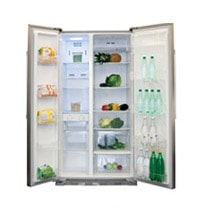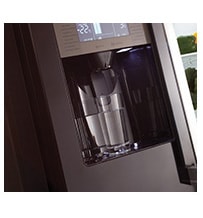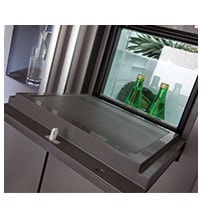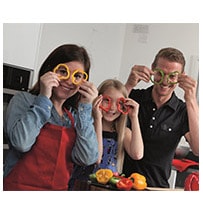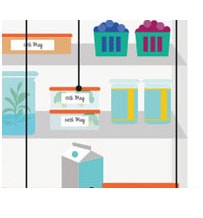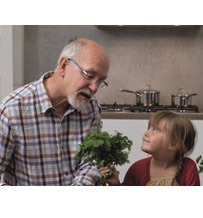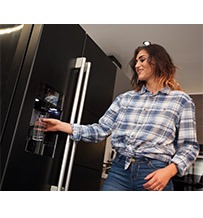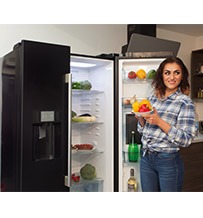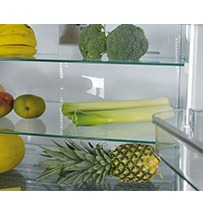
CDA Buying Advice – Refrigeration Tips
Keeping your fridge clean will certainly help to keep your food fresh. Cleaning up spills when they happen will get rid of huge ‘cleaning sessions’ and a regular wipe over the seals will ensure that they are dirt free and your door continues to seal properly.
Here are some great tips for looking after your refrigeration appliance from CDA. From cleaning to preserving energy!
Cleaning your fridge or freezer is easy, we recommend that a solution of bicarbonate of soda and warm water should be used to clean the interior, shelves and seal; bicarbonate of soda will also remove any odours left behind by food.
Bicarbonate of soda, mixed with water will get rid of stubborn stains on your shelving and storage compartments.
Toothpaste is brilliant for scrubbing up dull seals and giving them a Hollywood white gleam once more.
Hot soapy water is the best remedy for salad crispers that have been subjected to the lettuce slime phenomenon.
Do not overfill your appliance. Doing so will reduce the capability of cool air to move amongst the food and reduce its efficiency.
Thawing frozen food in the fridge compartment will help to keep the temperature low and save energy.
All our fridges are self-defrosting, keep the water drain hole at the back of the appliance clear to allow defrosted water to run away.
Rotating the food in your fridge, so that the first to pass its best is at the front, will reduce the amount wasted. Stock rotation will save you money on both replacing your food and on your energy bill, as you can access food quickly without leaving the door open for extended periods of time.

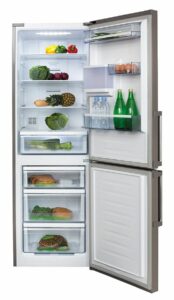
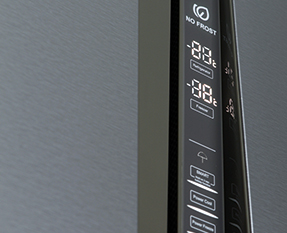
Energy saving settings
Some of our larger models feature a ‘holiday mode’ which allows you to turn off the fridge when you go away, and leave the freezer running for your long term food storage. This will save you energy as you are not paying to chill milk that you have not bought in.
Use the ‘home bar’ on the PC71 to reach bottles inside the door of your fridge, saving on opening the whole door every time you reach for the milk. This will keep the cool air inside and prevent your fridge from having to work hard to cool it down again.
Defrosting frozen food in your fridge is an excellent idea for safe food preparation before cooking as well as lessening the work load on your fridge as it doesn’t have to cool so much warm air with the frozen food thawing inside.
Step by step guide to defrosting freezer
In the week running up to ‘defrosting day’, use up the food in your freezer to lessen the waste and save money. Once empty, turn off the freezer and leave the door ajar to allow the ice and frost to melt and naturally defrost your appliance. Putting a towel on the floor to absorb melting water is a good idea to prevent mess.
If you want to speed up the process, do not pick or chip at the ice! This could damage the internal cavity walls and essentially finish your freezer, for good! Instead, place a bowl or tray of hot water inside the freezer to gently speed up the defrosting process.
Thermometer and fridge temperatures
Ideally, your fridge should be set to a temperature of less than 5°C as this prevents listeria from growing. Your freezer should be set to around -18°C for optimum long term storage.


